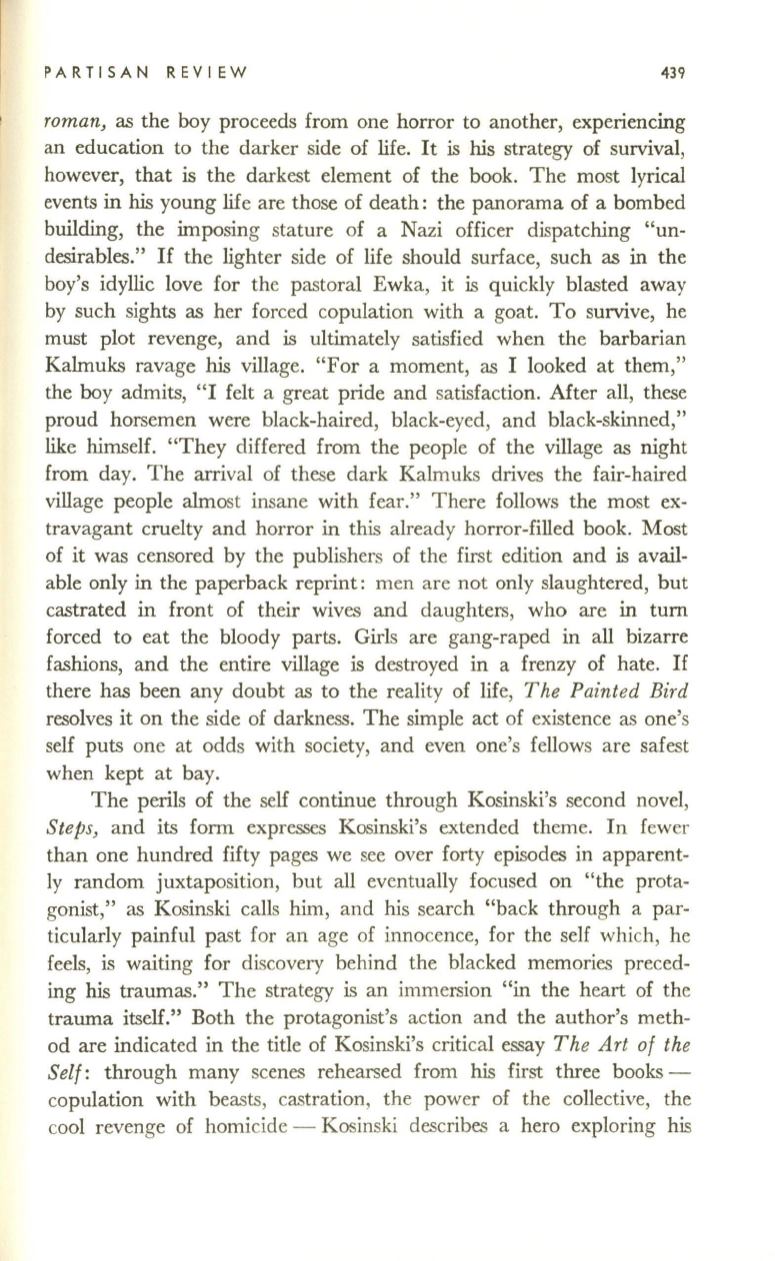
PARTISAN REVIEW
439
roman
J
as the boy proceeds from one horror to another, experiencing
an education to the darker side of life. It is his strategy of survival,
however, that is the darkest element of the book. The most lyrical
events in
his
young life are those of death: the panorama of a bombed
building, the imposing stature of a Nazi officer dispatching "un–
desirables."
If
the lighter side of life should surface, such as in the
boy's idyllic love for the pastoral Ewka, it is quickly blasted away
by such sights as her forced copulation with a goat. To survive, he
must plot revenge, and is ultimately satisfied when the barbarian
Kalmuks ravage
his
village. "For a moment, as I looked at them,"
the boy admits, "I felt a great pride and satisfaction. After all, these
proud horsemen were black-haired, black-eyed, and black-skinned,"
like himself. "They differed from the people of the village as night
from day. The arrival of these dark Kalmuks drives the fair-haired
village people almost insane with fear." There follows the most ex–
travagant cruelty and horror in this already horror-filled book. Most
of it was censored by the publishers of the first edition and is avail–
able only in the paperback reprint: men are not only slaughtered, but
castrated in front of their wives and daughters, who are in tum
forced to eat the bloody parts. Girls are gang-raped in all bizarre
fashions, and the entire village is destroyed in a frenzy of hate.
If
there has been any doubt as to the reality of life,
The Painted Bird
resolves it on the side of darkness. The simple act of existence as one's
self puts one at odds with society, and even one's fellows are safest
when kept at bay.
The perils of the self continue through Kosinski's second novel,
StepsJ
and its fonn expresses Kosinski's extended theme. In fewer
than one hundred fifty pages we see over forty episodes in apparent–
ly random juxtaposition, but all eventually focused on "the prota–
gonist," as Kosinski calls him, and his search "back through a par–
ticularly painful past for an age of innocence, for the self which, he
feels, is waiting for discovery behind the blacked memories preced–
ing his traumas." The strategy is an immersion "in the heart of the
trauma itself." Both the protagonist's action and the author's meth–
od are indicated in the title of Kosinski's critical essay
The Art of the
Self:
through many scenes rehearsed from
his
first three books–
copulation with beasts, castration, the power of the collective, the
cool revenge of homicide - Kosinski describes a hero exploring his


